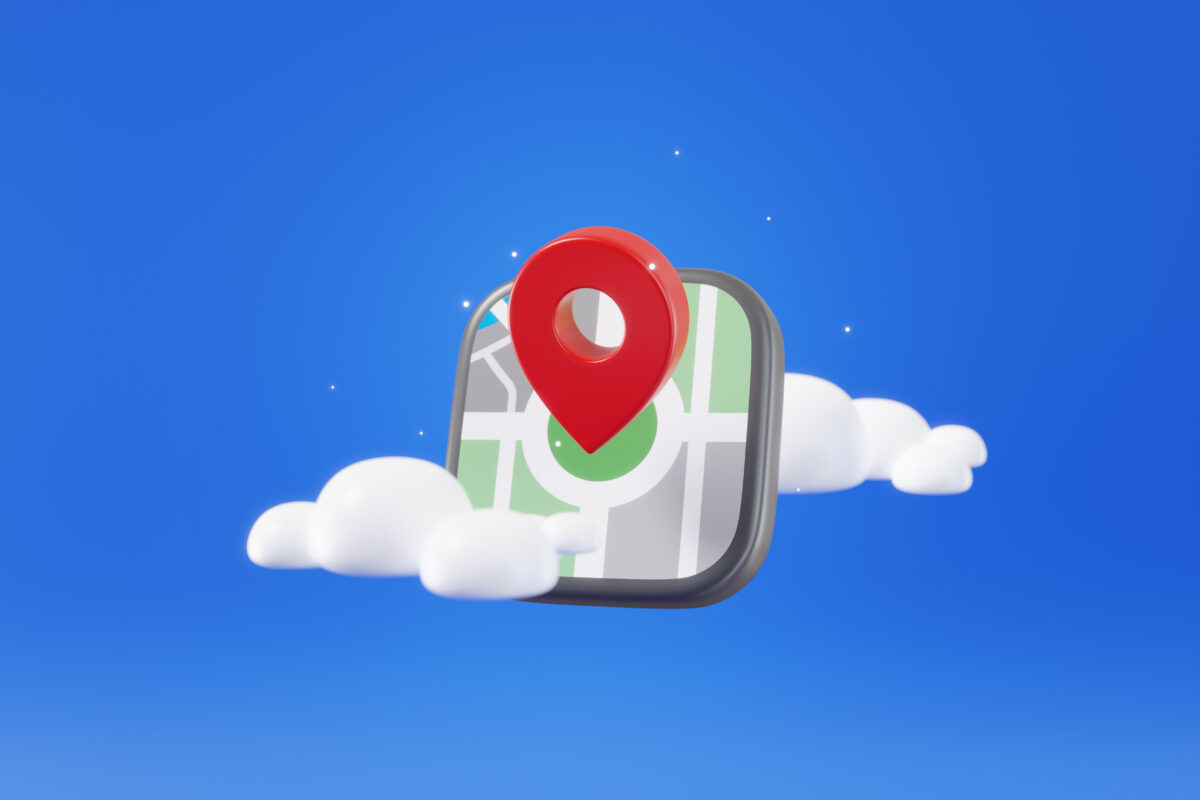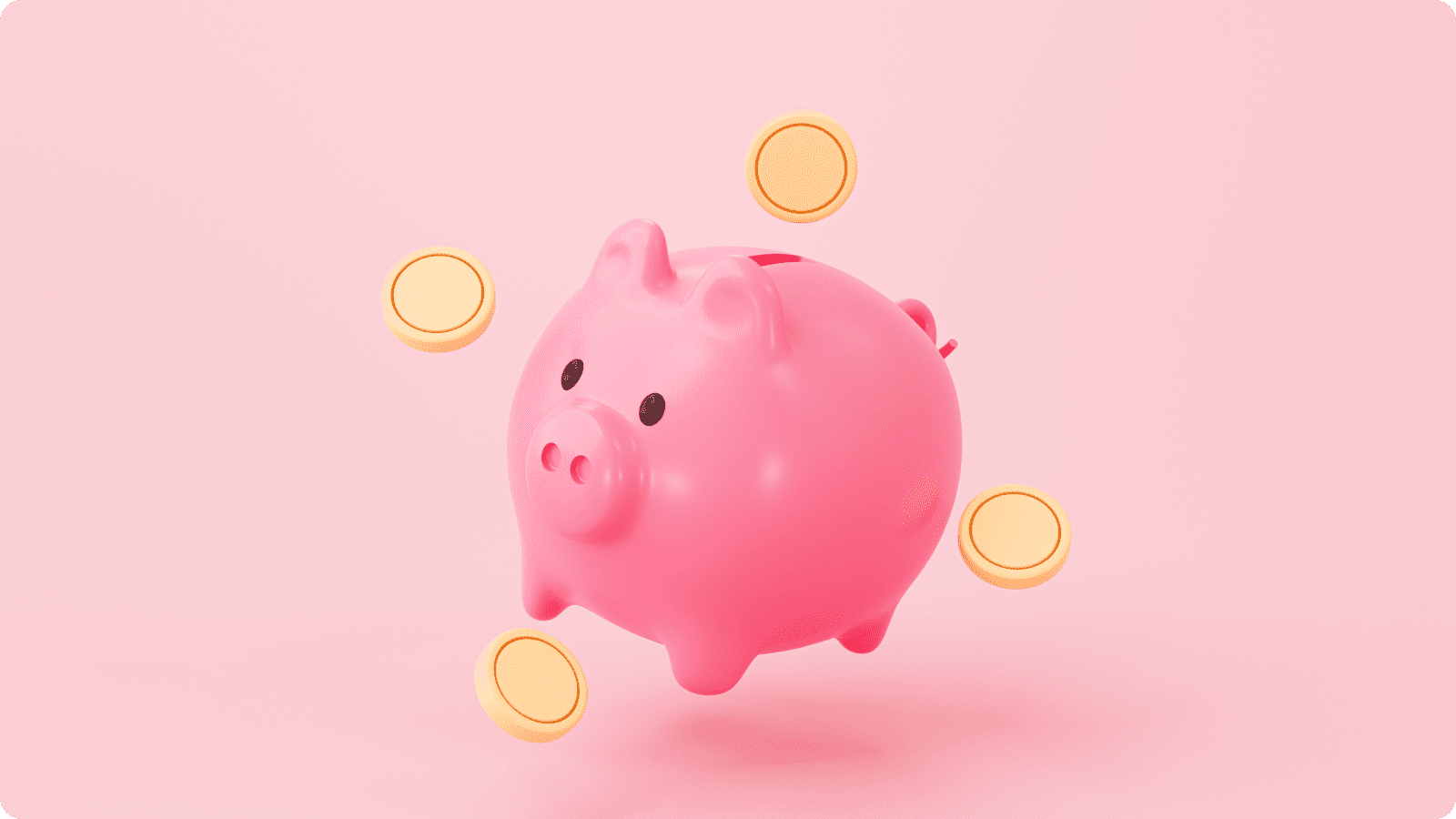
30 Tips for Creating Stunning Brochures
What Is a Brochure (With Examples)?
A brochure is a short paper document that can be folded into a pamphlet or a leaflet. Most brochures are folded in thirds or fourths, creating six or eight distinct panels.You can find a wide range of brochure examples online, especially when browsing online printing services, such as Vistaprint. Vistaprint includes a variety of brochure examples and templates for different industries, including medical, real estate, construction, and more.
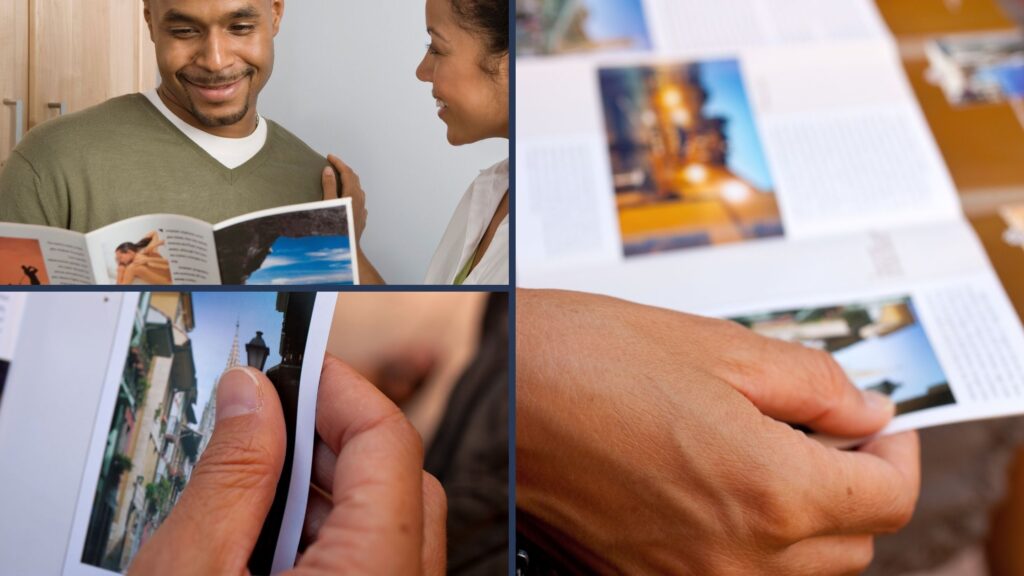
1. Use Software to Create Attention-Grabbing Brochures
Unless you have experience in graphic design, consider using software to create brochures. Canva is a popular online design tool for generating brochures, graphics, and other marketing materials. You can choose between a free version and a pro version with extra features. Using Canva allows you to choose from templates, upload images, and add text. You can also browse content ideas. Anyone can easily create a beautiful brochure with minimal effort.
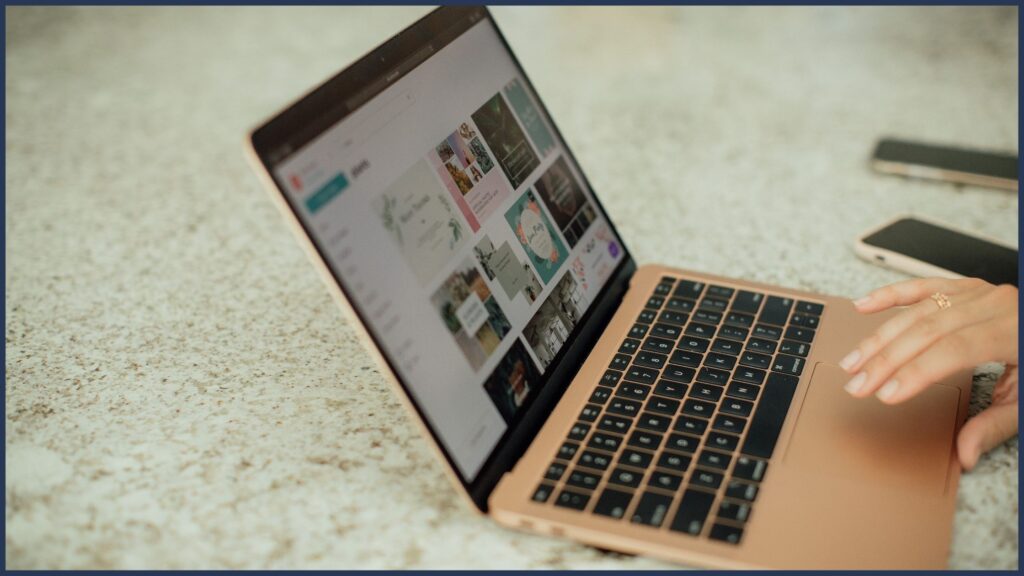
2. Use Data Visualization for Concise and Engaging Brochures
One of the most effective leaflet design ideas is the use of data visualization. Studies show that 40% of people respond better to visual information. About 90% of the information transmitted to the brain is also visual. Looking at visuals increases information retention, allowing your brochures to have more of an impact. Try to express your main points using visuals. Create original images that help explain your main points.
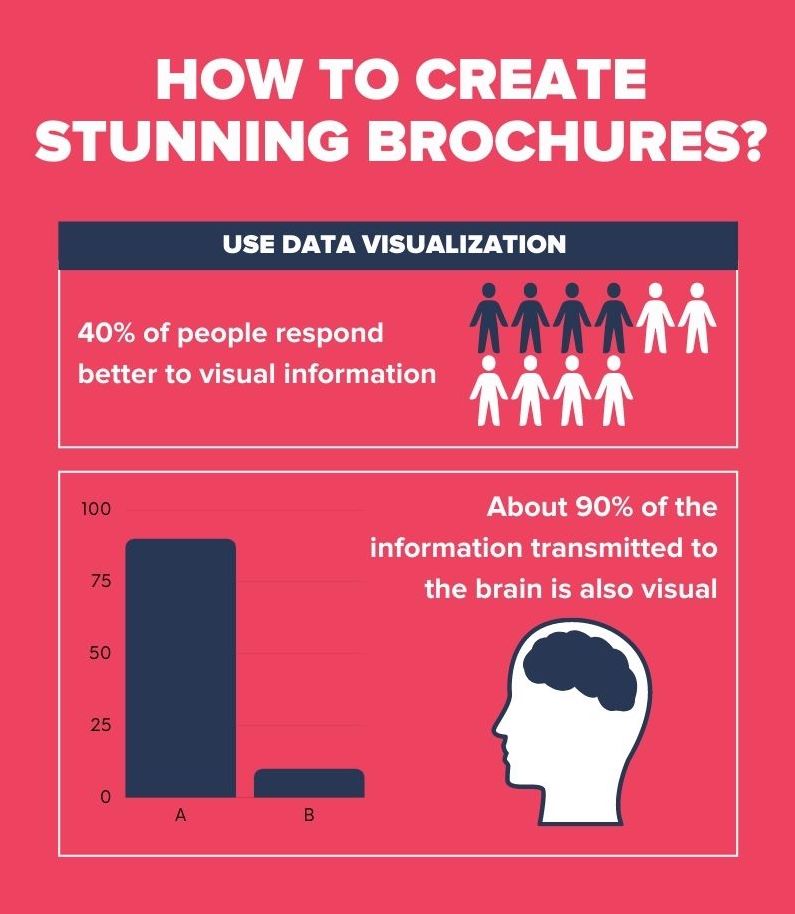
3. Include a Clear Call to Action Telling People What to Do Next
In our guide to increasing sales with brochure distribution, we list a call to action (CTA). This is an essential component for an effective brochure. A CTA tells people what to do next after reading the information in your brochure. For example, you may direct people to a landing page with a signup for your newsletter.
4. Maintain a Consistent Style Throughout the Brochure
Most brochure ideas include a consistent style on every panel. This involves using the same fonts, color schemes, and types of images throughout the brochure. Maintaining a consistent style creates a more professional image and creates fewer distractions that may keep people from digesting the content.
5. Match the Style of the Brochure to Your Brand Identity
Along with making sure that the content is consistent inside the brochure, make sure that it is consistent with your brand identity. The brochure should include a call to action that sends the reader to a specific webpage. The color schemes, fonts, logos, and overall tone of the content should fit your brand. If the branding does not match, the visitor may become confused or lose trust. A lack of consistency limits credibility.

6. Add Statistics or Facts to Build Greater Credibility
Including statistics is another method for increasing credibility. Adding relevant stats and facts demonstrates your knowledge of your industry or the needs of your target audience.
7. Use Bright Colors or Clear Icons to Highlight Information
Using bright colors and icons can help draw people’s attention to specific information, such as the call to action at the end of your brochure. For example, you may place the image of a sticker or a checkmark next to vital information in the brochure.
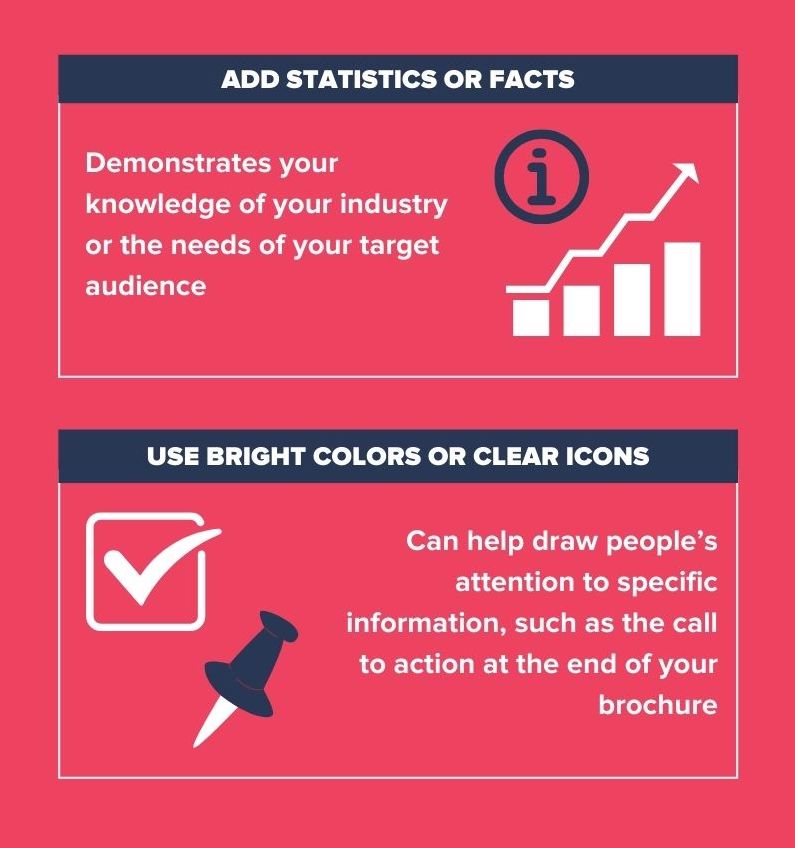
8. Use a Contrasting Color to Highlight Information
Instead of a bright color or an image, you can use a contrasting color to highlight information. For example, if most of your text is in white, switch to black to make specific text stand out.
9. Avoid Using Complex Fonts and Images in Your Brochure
If you look at brochure examples, you will find that most brochures have a clean look with minimal clutter. Complex fonts and images can add to the clutter. Using simple fonts and clear images helps make your brochure more readable.
10. Use a Simple Color Scheme When Using Bold Fonts
If you choose to use bold fonts, scale back on other features, such as the use of colors. Keep the design simple to give the bold fonts more weight. For example, you can stick to a plain background to make your bold fonts pop.
11. Use a List to Clearly Explain Key Points
A list is an effective way to make your brochure ideas easier to understand. A list helps break down your content into smaller sections. It may also help explain the steps involved in completing a specific activity, such as signing up for your services or using one of your products.
12. Add an Illustrated Timeline of Your Product or Brand
A timeline offers a simple, recognizable way to present information. It also helps increase the chances of your audience reading the entire brochure. The timeline keeps the reader moving from one piece of information to the next. Using a timeline also makes it easier to organize information in a clear, logical manner. You can start with the introduction of your product and cover each major milestone leading up to your current offering.
13. Add Numbered Sections to Your Brochure
Instead of a list or a timeline, you may use numbered sections to separate the information in your brochure. Numbered sections keep the content organized and easy to scan. You should also make the numbers large or use a bold font to help direct the reader from one section to the next.
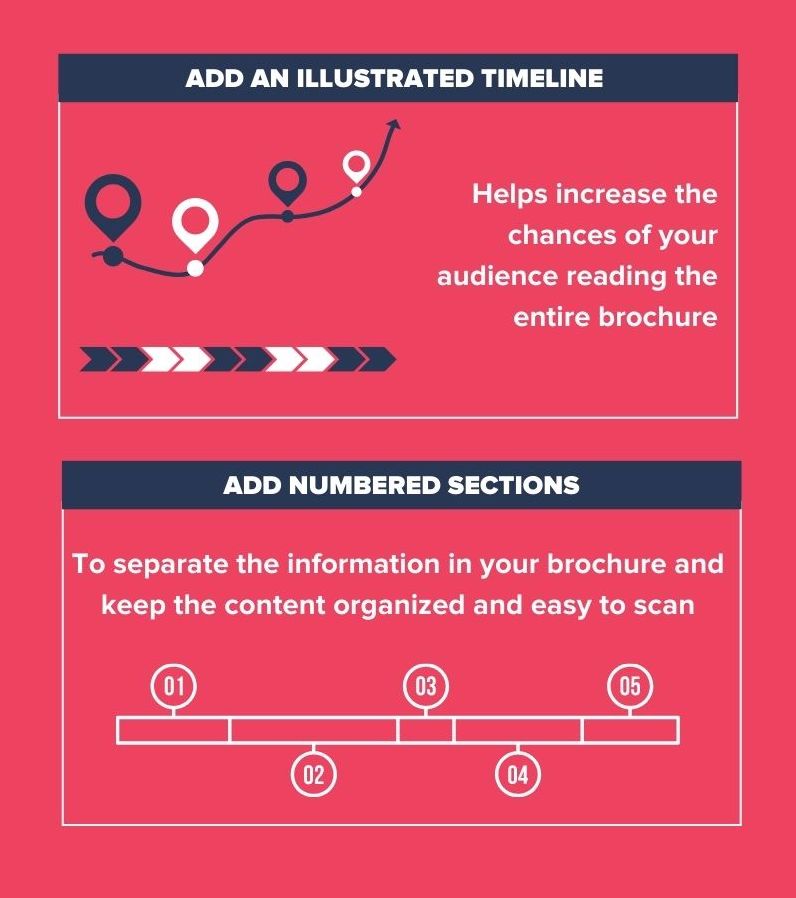
14. Use Colors to Create Specific Emotions
Color psychology is often used in marketing. It also appears in brochure examples. Templates for medical brochures often include blue colors, as blue is associated with health. Banks often use green, which is associated with money.
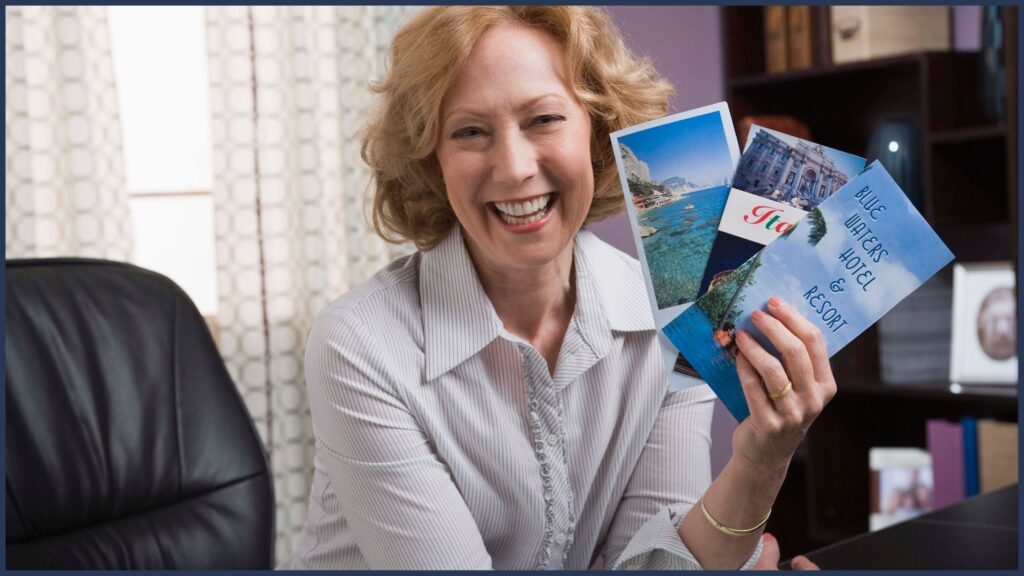
15. Stick to a Single Point Per Panel
If you are using your brochure to discuss complex or detailed information, try focusing on a single piece of information per panel. Using a single panel per topic helps keep the brochure from becoming cluttered with information.
16. Use Different Backgrounds to Divide Sections
Using different background colors or images can help divide the panels into different sections. Many brochure examples include contrasting background colors. For example, you may use a white background followed by an image background or a dark background.
17. Break Each Panel Into Multiple Sections
A brochure offers limited space and often works best with minimalist designs. However, if you need to present a lot of information, you can divide the panels into multiple sections. Use different backgrounds to help divide the content.
18. Try Unconventional Layouts and Designs
While most brochures are printed on standard legal-size paper, you can choose from a wide range of layouts and paper sizes. You can also fold the paper in unique or interesting ways instead of the traditional vertical folds.

19. Choose the Right Material for Your Brochure
Printing services allow you to choose from a variety of materials and finishes for your brochure. For example, a glossy brochure can create a more sophisticated look. A company that wants to come across as environmentally friendly may use recycled paper.
20. Include Inserts in Your Brochure
An insert is often a physical item that is distributed with your brochure. Common inserts include CDs, DVDs, business cards, and coupons or vouchers. The insert is often added in a sleeve at the back of the brochure.
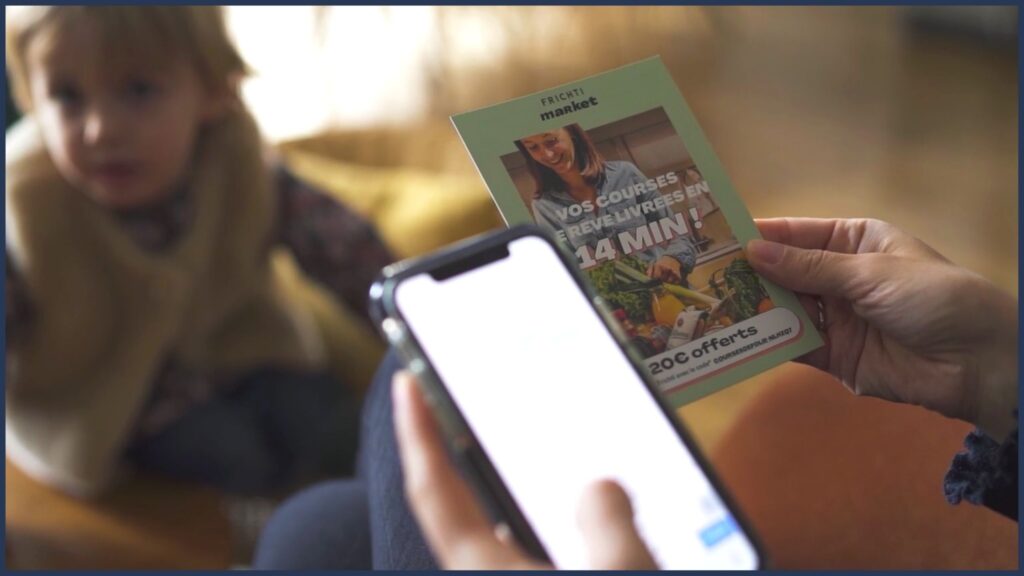
21. Include Social Proof of Your Past Work
Social proof helps show potential customers that you are an established business. You can demonstrate your experience by including a list of notable clients or brands that you have worked with. The list often includes the logo of each client or brand and is typically found on the last panel.
22. Use Visual Cues to Help Readers Navigate the Brochure
Including visual cues can ensure that readers navigate your brochure in the correct order. Visual cues can also help draw attention to specific content, such as a statistic or an image. Common visual cues include lines and arrows.
23. Include a Map to Direct People to Physical Locations
If your brochure is promoting a physical location, such as a business location or an upcoming event, add a small map to the brochure. The map allows people to visualize their path. It is also a useful feature that may help make your brochure a little more effective.
24. Include a Calendar with the Date for an Upcoming Event
As with a map, a calendar can help people visualize their next step. It forces them to consider their schedule and whether they are free to attend. This is a great addition to a brochure promoting an upcoming event.
25. Include Photos of Real People in Your Brochure
Including real faces helps make a genuine connection with your audience. You can create a stronger emotional bond by including photos of your team, the community, or any other real person that is relevant to the content included in the brochure.
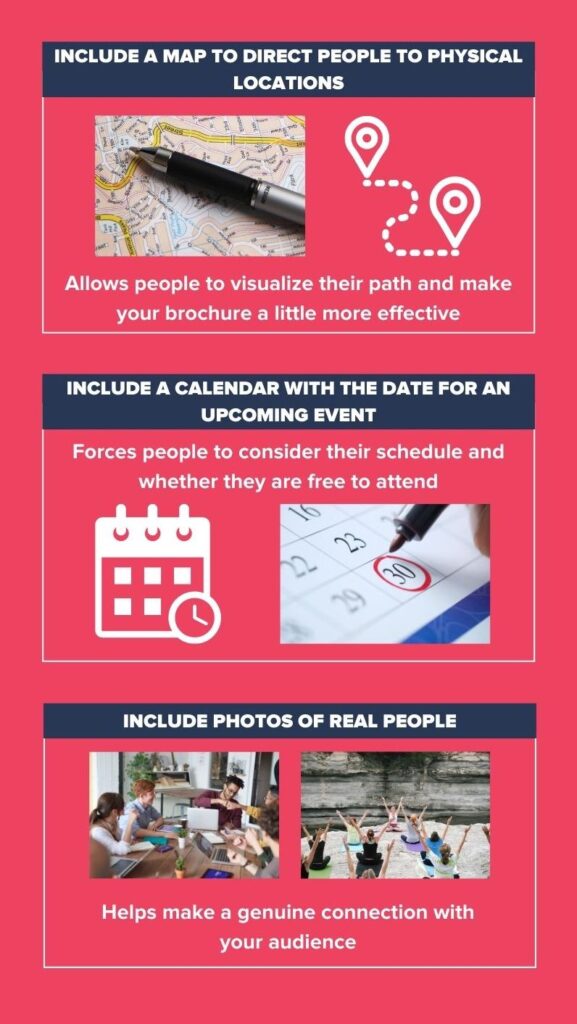
26. Condense Your Wording to Make the Content Readable
A brochure should not include large blocks of text and lengthy sentences. You may need to revise your content several times to condense the information. Remove any unnecessary words.
27. Only Use High-Quality Images in Your Brochures
A low-resolution image will look worse when printed on paper. You need to ensure that you only use high-quality images. Use the highest resolution version of the image when uploading it to the design software. The software can scale the image to fit your design.
28. Include Contact Information in a Clear Spot on the Brochure
Forgetting to add contract information significantly limits the effectiveness of your brochure campaign. Include contact details at least once in a prominent spot. The last panel is often used for the contact information and a final CTA. Avoid cluttering the panel with other information, ensuring that the contact information remains highly visible.
29. Try Multiple Designs Before Choosing the Final Look
Creating a stunning brochure design requires patience. Rushing the process is likely to result in amateurish designs cluttered with information or images. Take your time and consider trying multiple designs. Look at how your information is presented when using a variety of layouts and design options to see what works best.
30. Partner with a Distribution Service to Distribute Your Brochures
After creating your brochures, you need to get them into the hands of potential leads. Working with a distribution service simplifies the way you distribute flyers and marketing materials.
Oppizi offers easier management for flyer distribution campaigns. Our platform includes an intuitive dashboard for analyzing your campaign. You can track the areas where your flyers have been distributed and track a variety of metrics for getting more out of your offline marketing campaigns.
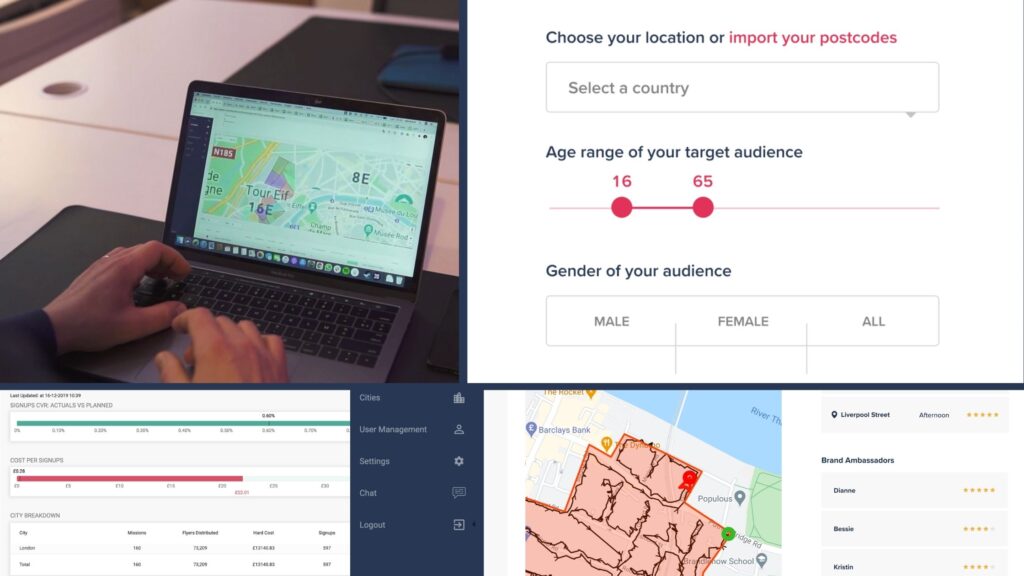
What Is the Format of a Brochure?
Most brochures are folded to create multiple panels. The front panel typically includes the company logo and a headline. The inner panels explain the topic of the brochure in more detail. You may include supporting facts to help deliver your message. The last panel includes contact information and a call to action.
What Do You Write in a Brochure?
Brochure content ideas include promoting the benefits of a product, addressing a problem, or introducing your brand. The content inside the brochure should align with your marketing goals. If you want to increase brand awareness, you may focus on providing information about your business and industry.
How Do I Make a Brochure?
You can create a brochure using basic photo editing software or an online platform, such as Canva. However, if you want to ensure that your brochures are appealing and effective, consider hiring a design firm or independent designer.
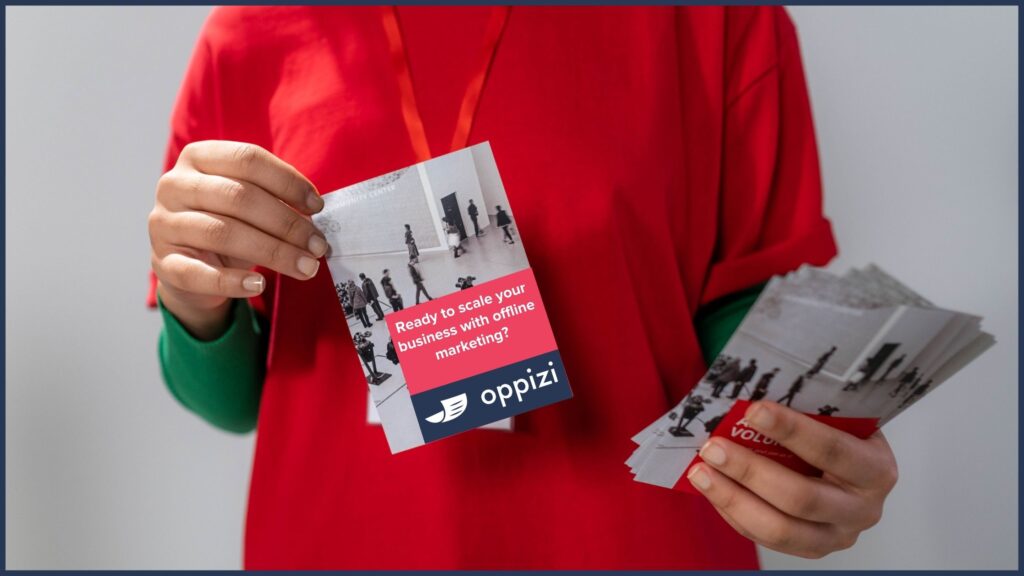
Brochures are effective marketing tools if you take the time to create a stellar design. Brochures grab attention and leave a lasting impact. You can also reach customers using a marketing channel with less competition. To create an appealing brochure design, remember to review brochure examples and various brochure design ideas. In the end, an effective brochure is easy to digest, free of clutter, and compelling to look at. If you keep these details in mind, you should have no problem designing an attention-grabbing brochure.

